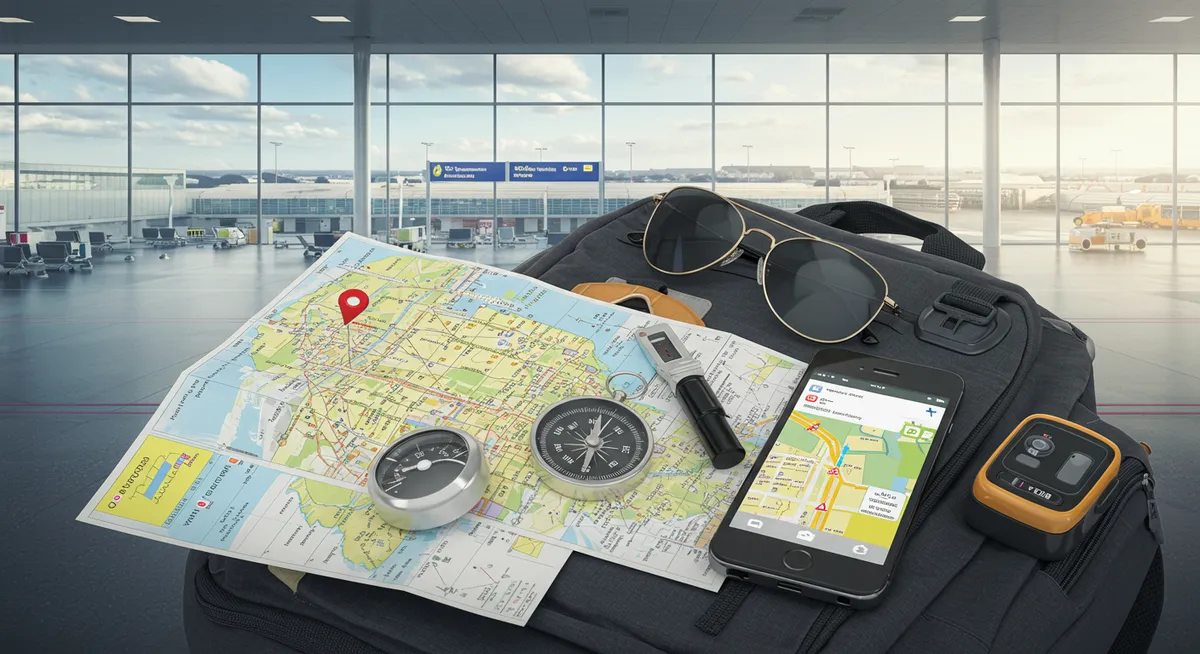
10 Genius Airport Hacks for Smoother, Stress-Free Travel
Table of Contents
Want to find the best travel deals for this destination? Chat with our travel hacking specialist!
Get Travel HacksCategory: airport-hacks
10 Genius Airport Hacks for Smoother, Stress-Free Travel
Airports can be stressful, confusing, and time-consuming, turning what should be the beginning of an exciting journey into a frustrating experience. These 10 airport hacks combine insider knowledge, technological tools, and strategic planning to help you navigate terminals more efficiently, breeze through security checkpoints, and make your pre-flight experience more comfortable. Whether you're a frequent flyer or an occasional traveler, these practical techniques will transform your approach to airports and significantly reduce travel anxiety.
Streamlining Airport Security and Check-in
The first set of hacks focuses on efficiently navigating the often stressful and time-consuming security and check-in processes, helping you get to your gate faster and with less hassle.
1. Leverage Expedited Security Programs
Invest in trusted traveler programs to drastically reduce security wait times. For U.S. domestic travel, TSA PreCheck ($78 for 5 years) allows you to keep shoes, light jackets, and belts on, while laptops and liquids can remain in your bag. For international travelers, Global Entry ($100 for 5 years) includes TSA PreCheck benefits plus expedited customs processing when returning to the U.S. CLEAR ($189 annually, with discounts available through certain credit cards and airlines) uses biometric authentication to bypass the document check line entirely at participating airports. For budget-conscious travelers, the free Mobile Passport Control app offers expedited entry at select U.S. airports for international arrivals.
Pro Tip: Several premium travel credit cards reimburse the application fee for TSA PreCheck or Global Entry as a cardholder benefit. Check your existing cards before paying out of pocket.
2. Master the "Security Bin Preparation" Technique
Prepare for security screening while waiting in line, not when you reach the bins. Wear easily removable shoes, empty pockets into a jacket or bag pocket (which can be quickly removed and placed in a bin), and have your laptop and liquids bag accessible at the top of your carry-on. Wear socks without holes to avoid walking barefoot through security. For maximum efficiency, follow the "reverse bin loading" method: place your shoes and items you'll need to put back on first in the last bin, followed by electronics, then your bag—this ensures you can collect your belongings in the correct order for fastest repacking.
3. Choose Security Lines Strategically
Not all security lines are created equal. Look for lines with business travelers rather than families or large groups, as experienced travelers move through security more efficiently. Counter-intuitively, sometimes longer lines with multiple TSA agents working move faster than shorter lines with fewer agents. Left-side security lines often move faster because most people naturally drift right. For international travel, research which terminal has automated passport control kiosks and use these when available. Additionally, many airports have multiple security checkpoints accessing the same terminals—check the airport map for less obvious entry points that may have shorter lines.
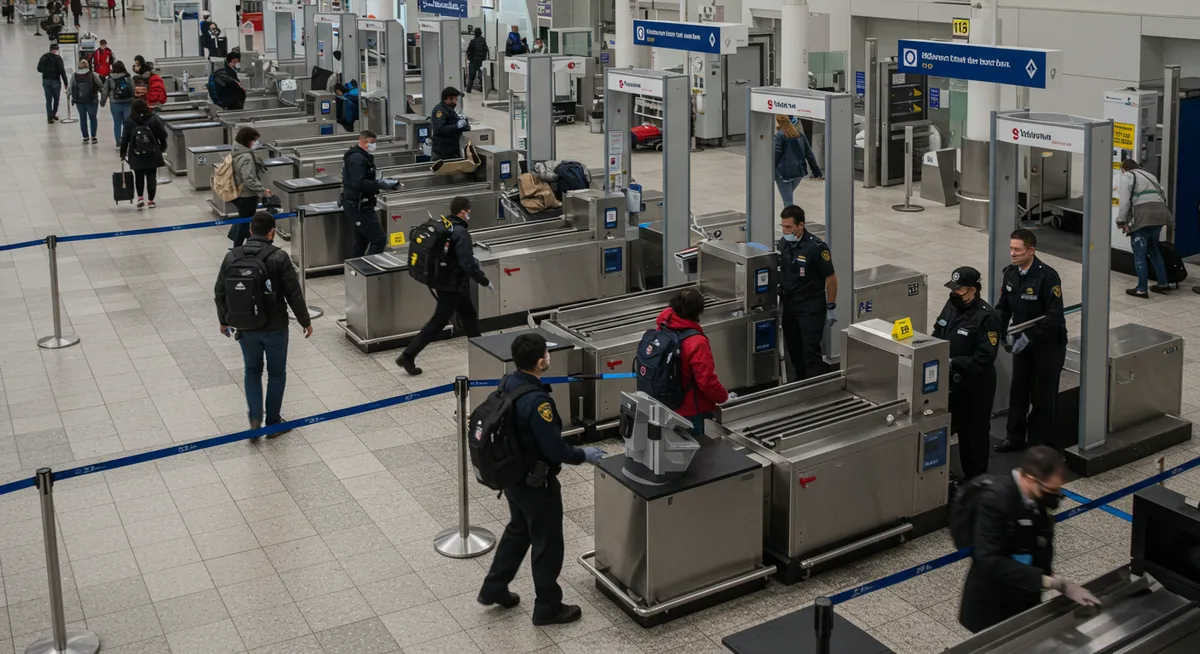
4. Use Online Check-in and Mobile Boarding Passes
Most airlines allow online check-in 24 hours before departure. Always take advantage of this option to select or confirm seats and generate mobile boarding passes. This allows you to bypass check-in counters entirely if you're not checking bags. Save boarding passes to your phone's wallet app for offline access, and take screenshots as backup. For connecting flights or international travel where paper boarding passes might be required, use self-service kiosks at the airport rather than staffed check-in desks. Many airlines now offer bag tag printing at these kiosks as well, allowing you to attach your own luggage tags and proceed directly to bag drop points with minimal wait time.
5. Pack a TSA-Friendly Carry-on
Organize your carry-on specifically for security efficiency. Use clear toiletry bags that exceed the minimum requirements for liquids, making contents visible to security agents. Consider TSA-approved laptop bags that allow your computer to remain in the bag during screening. Keep electronics grouped together for easy removal. Minimize items that commonly trigger secondary inspections, such as dense food items, large metal objects, or complicated electronics with many wires. If you frequently travel with items that might raise questions (camera equipment, medical devices), consider printing the TSA guidelines regarding these items to show agents if needed.
Important Note: Food items, particularly dense organic matter like cheese or chocolate, can appear suspicious on X-ray machines. Either declare these items before screening or pack them in easily accessible locations for quick removal if requested.
Maximizing Airport Comfort and Convenience
The next set of hacks focuses on making your time at the airport more comfortable and productive, transforming potentially wasted hours into a pleasant part of your journey.
6. Access Airport Lounges Without Elite Status
Airport lounges offer comfortable seating, complimentary food and drinks, reliable Wi-Fi, and often showers and quiet work spaces—but access isn't limited to frequent flyers or business class passengers. Several credit cards provide complimentary Priority Pass membership, offering access to over 1,300 lounges worldwide. Day passes for many lounges can be purchased for $25-60, often worth the investment during long layovers. The LoungeBuddy app helps identify lounges you can access based on your itinerary, elite status, and credit cards. For budget travelers, some lounges allow access for 2-3 hours at reduced rates. Additionally, during irregular operations or significant delays, politely asking airline service desks for complimentary lounge access can sometimes be successful.
7. Create a Personal Airport Comfort Kit
Assemble a dedicated airport comfort kit to improve any airport stay. Include a refillable water bottle (empty before security, filled after), high-protein snacks that don't crush easily, a portable battery pack for electronics, noise-canceling headphones or earplugs, an eye mask for naps, compression socks for circulation on longer flights, and a lightweight packable layer for unpredictable airport temperatures. For overnight layovers or delays, add travel-size toiletries, a microfiber towel, and a change of undergarments. Keep this kit in an easily accessible portion of your carry-on for quick retrieval upon arrival at the airport.

8. Master the Airport Layout Before Arrival
Research your departure, arrival, and connection airports before travel day. Most airports offer interactive maps on their websites or through their dedicated apps. For complex airports or tight connections, identify the location of your arrival gate, departure gate, and the most efficient path between them. Note locations of lounges, quality dining options, water bottle filling stations, and power outlets. For international connections, understand the required paths through immigration and security rescreening. Apps like FlySmart or GateGuru provide user-updated information about services and walking times between gates. For layovers in unfamiliar airports, this preparation can transform a stressful rush into a confident navigation experience.
Strategic Airport Timing and Disruption Management
The final set of hacks focuses on timing your airport experience optimally and effectively handling the inevitable disruptions that occur during air travel.
9. Use Data-Driven Arrival Timing
Rather than following the standard recommendation to arrive 2 hours before domestic and 3 hours before international flights, use data to optimize your airport arrival time. Check security wait times through the MyTSA app, which provides historical and current wait time data for U.S. airports. Consider your specific terminal, as security wait times can vary dramatically within the same airport. Account for your own efficiency factors: Are you checking bags? Do you have PreCheck? Are you familiar with the airport? For familiar airports where you have expedited security and aren't checking bags, arriving 60-75 minutes before a domestic departure is often sufficient. Conversely, at notoriously slow airports during peak times, an earlier arrival may be warranted.
10. Develop a Flight Disruption Action Plan
Prepare a systematic approach for handling flight delays and cancellations that puts you ahead of other passengers. Download your airline's app and activate push notifications for flight status updates. For serious disruptions, simultaneously: 1) Get in the customer service line, 2) Call the airline's customer service number (international numbers often have shorter wait times), and 3) Use the airline's app or social media channels to seek rebooking options. Save the phone numbers of your airline's customer service, your travel insurance provider, and credit card concierge service if available. For weather disruptions affecting multiple flights, research alternative airports within driving distance that might remain operational. Knowledge of your passenger rights regarding compensation and accommodations for delays in different jurisdictions (particularly the EU's robust EC 261 protections) can lead to significant compensation when applicable.
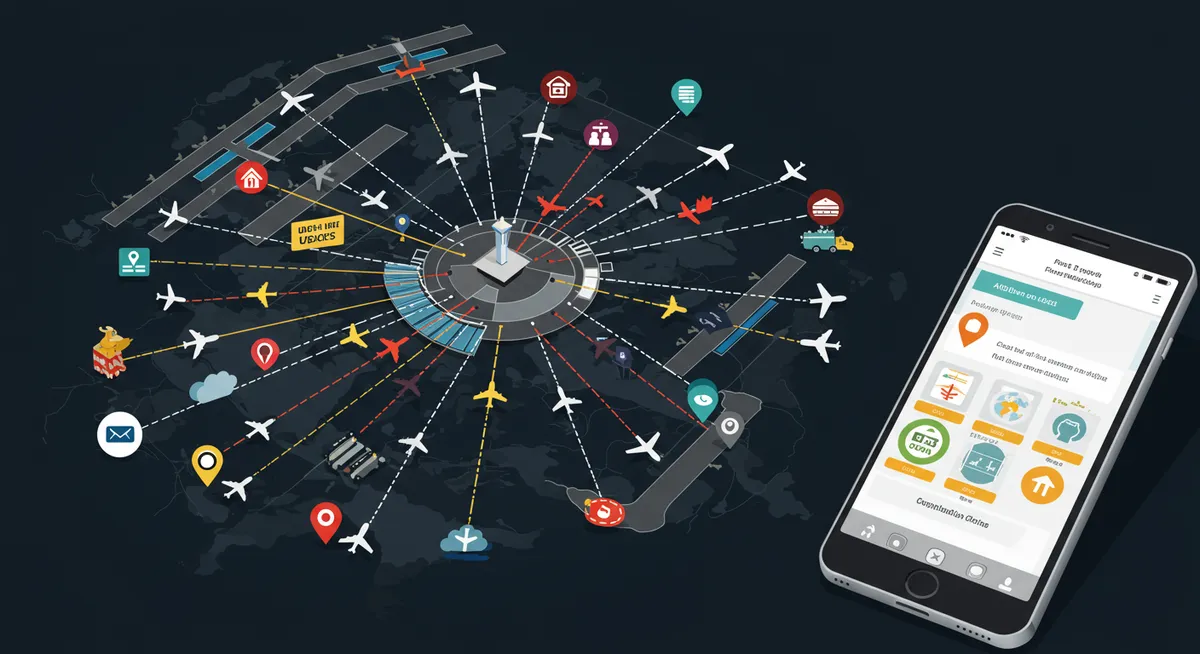
Frequently Asked Questions About Airport Hacks
Which expedited security program provides the best value for different types of travelers?
The optimal expedited security program depends on your travel patterns. For primarily domestic U.S. travelers who fly at least 3-4 times per year, TSA PreCheck ($78 for 5 years) offers excellent value by significantly reducing security wait times and stress. For those who travel internationally even once per year, Global Entry ($100 for 5 years, including TSA PreCheck benefits) provides superior value with its additional expedited customs processing. Business travelers or those based at airports with CLEAR lanes ($189 annually, though discounts are available) may find the additional time savings worthwhile, particularly when combined with PreCheck. For budget-conscious international travelers, the free Mobile Passport Control app offers nearly the same time savings as Global Entry at U.S. customs, though without the PreCheck benefits. The best approach for frequent travelers is often a combination: Global Entry for PreCheck and international arrival benefits, supplemented with CLEAR at high-volume airports where it's available.
How can I find quiet areas or places to sleep during long layovers or delays?
Finding quiet rest areas during long layovers requires knowing where to look. First, check if your airport has designated rest zones or sleep pods (like Minute Suites or GoSleep pods) available for hourly rental. For free options, look for gates that don't have departures for several hours—these areas are typically quieter and have less foot traffic. Some airports have interfaith prayer or meditation rooms that offer peaceful environments. Upper levels of terminals or international departure areas during off-peak hours often have less activity. The website and app SleepingInAirports.net provides terminal-specific advice for nearly every major airport worldwide, including recommended quiet corners, comfortable seating areas, and shower facilities. For layovers exceeding 8 hours, consider airport transit hotels, many of which offer day rates for 6-8 hour blocks without requiring an overnight stay. Some airports (particularly in Asia) offer free rest areas with reclining chairs specifically designed for transit passengers—these are typically found in international transfer areas.
What are the most effective strategies for handling connecting flights with tight layovers?
Successfully navigating tight connections requires preparation and strategic actions. Before booking, research the minimum connection time recommended by the airport for your specific scenario (domestic-to-domestic, international-to-domestic, etc.)—anything less than these minimums significantly increases risk. Once booked, research your connection airport's layout and identify the most direct path between arrival and departure gates. When selecting seats on your arriving flight, choose positions near the front of the aircraft for faster deplaning. During the first flight, inform a flight attendant about your tight connection; they can sometimes arrange priority deplaning or provide guidance. Upon landing, if the connection is extremely tight, don't hesitate to politely ask fellow passengers to let you pass when deplaning. For international connections requiring immigration, look for expedited lines for connecting passengers. If you miss a connection despite best efforts, immediately contact the airline through multiple channels simultaneously (service desk, phone line, and app) to secure rebooking. For self-created connections (separate tickets on different airlines), always allow substantially more time (at least 2-3 hours) as airlines have no obligation to accommodate missed connections between separate bookings.
How can I find the best food options at unfamiliar airports?
Finding quality airport dining requires looking beyond convenient but mediocre options near your gate. Start research before travel using apps like GateGuru or Yelp, which provide terminal-specific restaurant reviews from fellow travelers. Many major airports now host outposts of acclaimed local restaurants, offering authentic regional cuisine—these are typically superior to national chains. Look for dining options in the newest terminal sections, as airports often upgrade culinary offerings during renovations. For healthier options, use the app Airport Sherpa to locate specific food types or dietary offerings. If you have lounge access, always check their food offerings before purchasing terminal meals, as premium lounges often provide high-quality dining included with entry. When facing a long layover, consider leaving security to visit nearby options if the airport is known for restaurants in pre-security areas (like LAX's Theme Building or Amsterdam Schiphol's Holland Boulevard). For early morning or late night connections when many airport restaurants are closed, use delivery services like AtYourGate that bring food from open concessions directly to your gate.
What are the most valuable items to pack in carry-on luggage specifically for improving the airport experience?
A strategically packed carry-on can dramatically improve your airport experience. The most valuable items to include are: a high-capacity portable charger (20,000+ mAh) for keeping multiple devices powered during delays, a multi-port charging adapter to turn single outlets into charging stations for all your devices, noise-cancelling headphones or quality earplugs to create a peaceful environment in noisy terminals, an empty refillable water bottle to avoid expensive airport beverages, a packable layer like a lightweight down jacket or travel blanket for unpredictable terminal temperatures, high-protein non-perishable snacks to avoid overpriced airport food during delays, a sleep mask for napping during layovers, essential medications in their original labeled containers, basic toiletries for freshening up, and a small packet of sanitizing wipes for cleaning tray tables and high-touch surfaces. For international travel, add a universal power adapter, copies of important travel documents, and a pen for completing immigration forms. Technological additions like a tablet loaded with entertainment and a lightweight laptop power bank particularly enhance long airport stays during delays or extended layovers.
By implementing these airport hacks, you'll join savvy travelers who navigate terminals with confidence and minimal stress. The key is approaching airport experiences systematically—leveraging technology, understanding facility layouts, and planning strategically. While some of these techniques require additional preparation, the time savings and stress reduction make them valuable additions to your travel routine. Start with the hacks that address your primary airport pain points, whether that's security lines, layover boredom, or connection anxiety, and gradually incorporate more strategies into your travel toolkit. With practice, you'll transform what many consider the most frustrating aspect of travel into a smooth, even enjoyable, part of your journey.
Related Posts
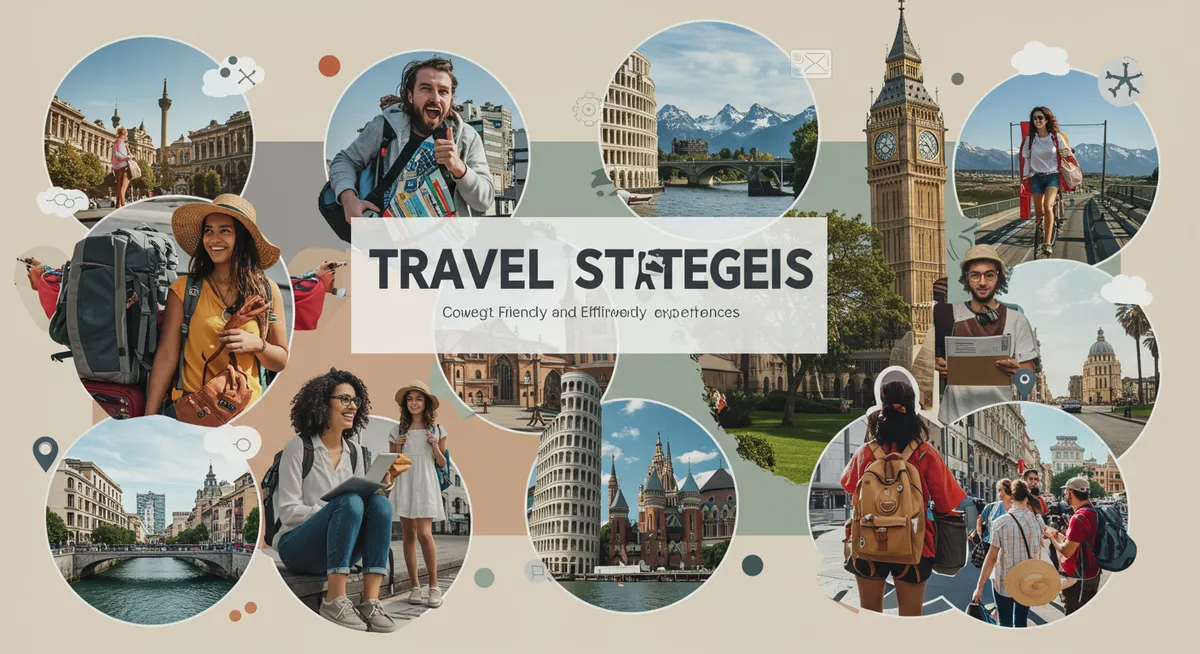
Top-Rated Travel Strategies: 6 Genius Hacks Frequent Travelers Swear By
Discover the 6 most effective travel strategies used by savvy travelers to save money, reduce stress, and elevate your travel experience.
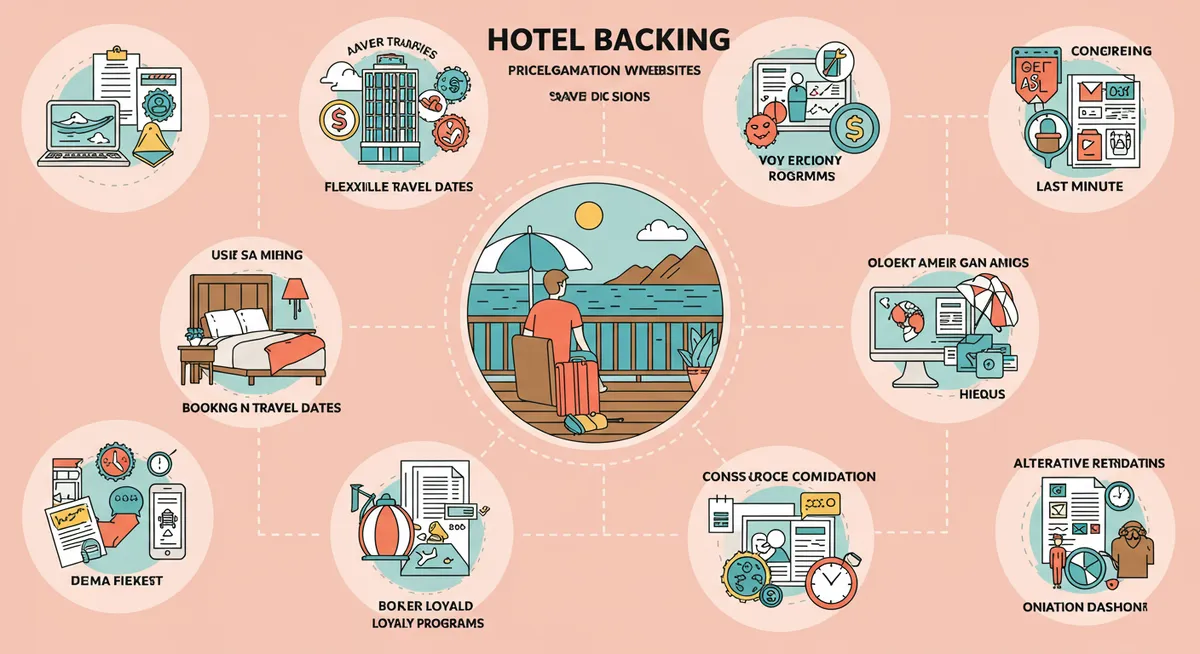
10 Clever Accommodation Hacks for Better Stays at Lower Prices
Discover 10 expert accommodation hacks that will help you find better lodging options, secure room upgrades, and save significant money on hotels and alternative stays.
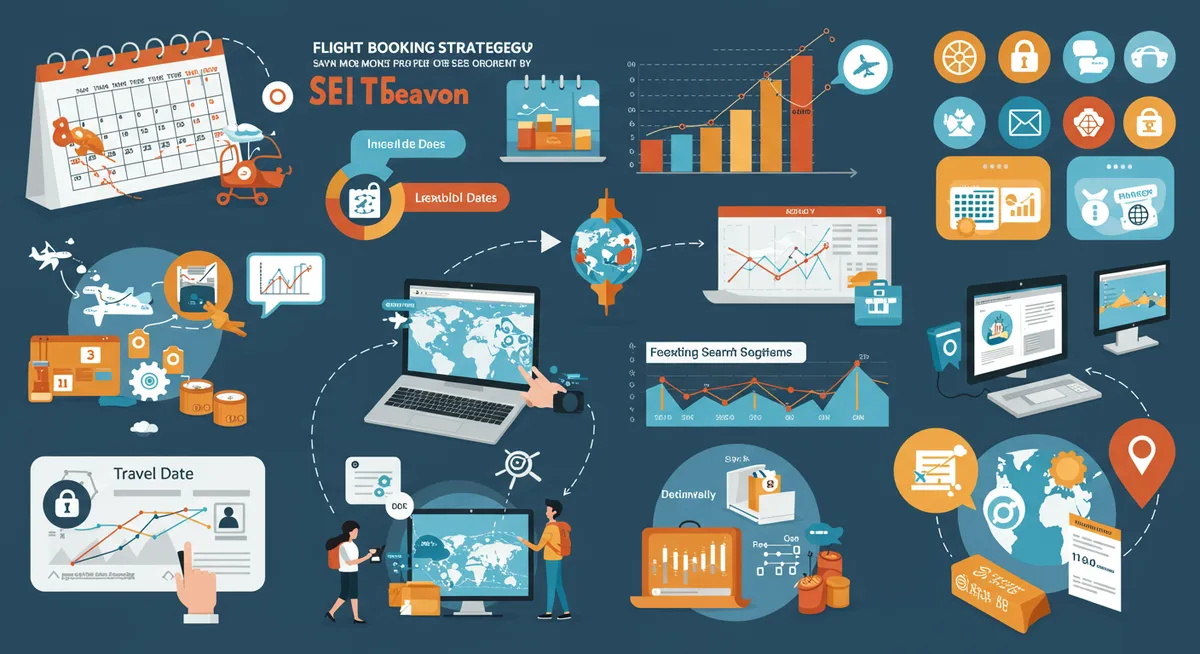
10 Essential Flight Hacks to Save Money and Travel Better
Discover 10 powerful flight hacks that will help you find cheaper airfares, get upgrades, and make your air travel experience more comfortable and affordable.